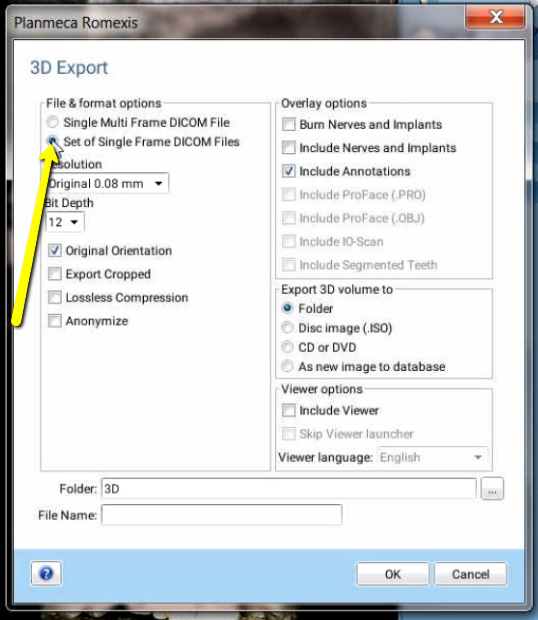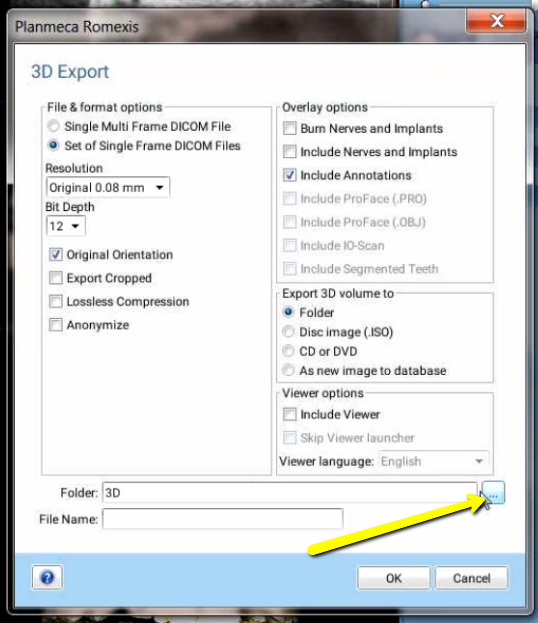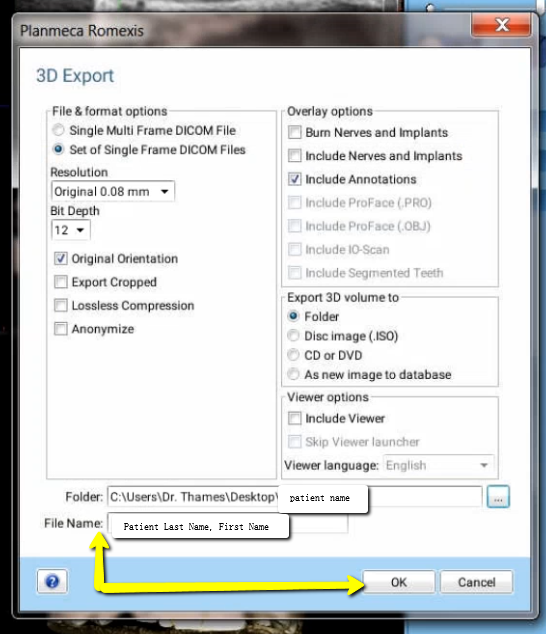1. On your desktop, right click on an empty space. Go to “New” and click “Folder”. A folder will appear with highlighted blue text. Type in the patient name and push “Enter” on your keyboard.

2. Open patient’s scan. At the top of the screen, hover over the drop down menu. In the “Output” section, select “Export Volume”.


3. A pop up box will appear. Select “Set of Single Frame DICOM Files”. (No other options should have to be changed).

4. Click on the “…” button to choose where to files export to.

5. A second pop up box will appear. Go to the desktop, select the patients folder, and click “OK”


6. The second pop-up box will disappear. Under the file name, type “Patient Last Name, First Name”. Click “OK”. Files will begin to export.


7. After the DICOM exports, go to the patients folder and verify the .dcm files were exported correctly; there should be several hundred files.

8. Go back to the desktop, right click on the patients folder, go to “Send to”, and select “Compressed (zipped) folder”. A duplicate folder will be made with either a zipper on it, or a blue “Z”. (*** If following a Dual Scan Protocol, please zip scans individually and label accordingly; i.e: “Patient Scan” and “Denture Scan” ***)

9. To upload the compressed folder, login to Implant Concierge. Click on the patient’s name to open the case. Click on the red “Upload DICOM” button.


10. Drag and drop the folder from the desktop to Implant Concierge. The file will automatically begin uploading.


11. Once the file reaches 100%, click the green “Complete” button.
